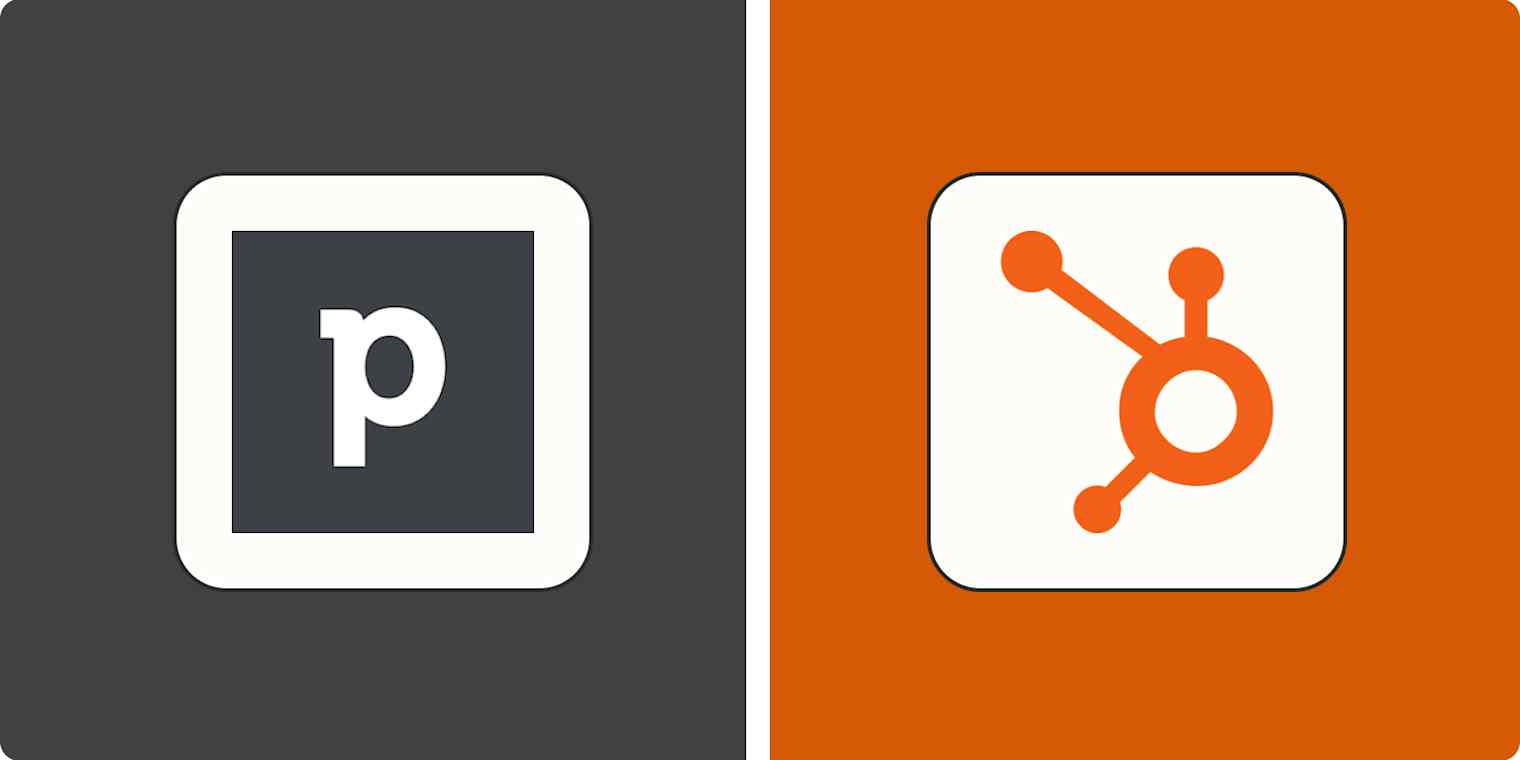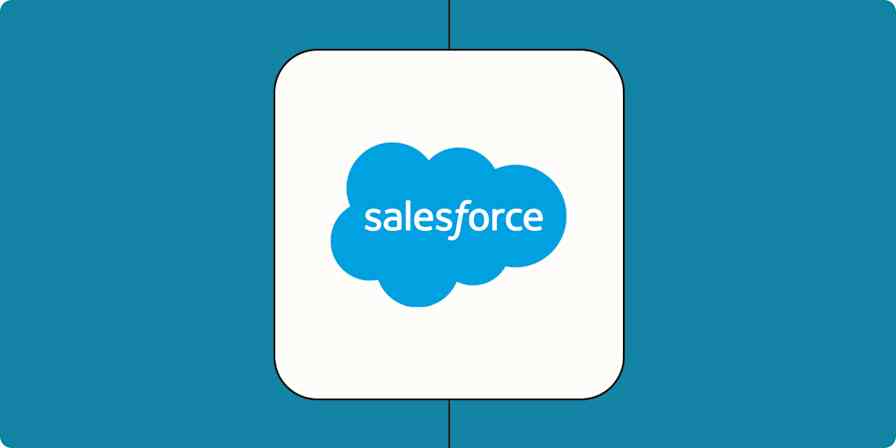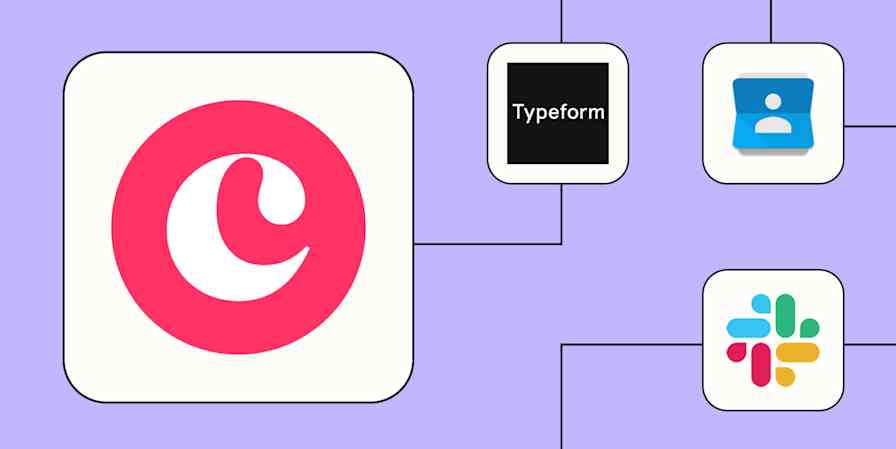Business is built on solid relationships. And while soft skills lift a respectable part of the weight, how and when you interact with your customers can be the difference between closed won or closed lost. A good CRM will help you keep track of every touchpoint, every client need, and every deal moving through the pipeline.
HubSpot and Pipedrive are two of the most popular CRM platforms. I've used HubSpot a bit in the past, and I've tested Pipedrive multiple times for freelance projects. This year, I dove back into each app, and here I'll compare Pipedrive and HubSpot to help you understand their feature sets—and which will fit your organization like a glove.
Table of contents:
Pipedrive vs. HubSpot at a glance
The gist of the matter is that HubSpot is a huge all-in-one app with a CRM at its core, while Pipedrive focuses on the tools that sales teams need to succeed. Keep reading for more details on my experiences with the apps.
| Pipedrive | HubSpot |
|---|---|---|
CRM and sales features | ⭐⭐⭐⭐⭐ Specializes in empowering sales teams with features that fit daily challenges | ⭐⭐⭐⭐ Powerful sales features, but not as specialized by comparison |
Automation and integration | ⭐⭐⭐⭐ Integrates with 300+ apps and Zapier | ⭐⭐⭐⭐⭐ Integrates with 800+ apps and Zapier; offers bi-directional sync |
Affordability | ⭐⭐⭐⭐ No free plan, but includes powerful features with a competitive price tag | ⭐⭐⭐ Generous free forever plan available, but pricing is confusing and steep as you scale |
Analytics | ⭐⭐⭐⭐ Easy-to-understand analytics all in one place | ⭐⭐⭐⭐ Deep analytics in dashboards scattered through the app's sections |
Extras | ⭐⭐⭐ LeadBooster, Projects, Web Visitors, Campaigns, and Smart Docs as paid add-ons | ⭐⭐⭐⭐⭐ Full range of marketing, customer service, content management, B2B commerce, and operations features |
AI | ⭐⭐⭐ AI sales assistant goes through your data and sends you suggested actions | ⭐⭐⭐⭐ Generative AI for text and images, AI agents, and integrated copilot chatbot |
HubSpot offers tools for sales, marketing, content management, customer service, operations, and commerce
HubSpot is more than a great CRM. It's a base of operations filled with tools to help you tackle plenty of business problems. These features are grouped into Hubs, so I'll use those to walk through the entire set.
Sales Hub. In addition to everything standard in a CRM, such as contact management and deal tracking, HubSpot includes its own meeting scheduler à la Calendly and a section to create your sales playbooks.
Marketing Hub. There's email marketing—both regular and automated campaigns—with easy visual builders to let you customize templates. Connect your social media and analytics accounts to post directly from HubSpot and see how your ads are performing. You can even run and track entire marketing campaigns from the platform, letting you attribute sales and data to each of them, improving your visibility over the results.

Content Hub. Translation: create your own beautiful website and start a blog there, all on a custom domain. Then, you can add new posts directly from HubSpot, optimize SEO, and create landing pages for special offers.

Service Hub. Customers having trouble? Create a customer portal where they can engage with your support team. Is there a hot issue affecting lots of people? Set up a knowledge base article to answer all the pressing questions without overwhelming your reps. At the end of the interaction, send out a feedback survey to see how you can improve.

Operations Hub. Organize, clean, and sync your data across multiple sources, as you build an accurate single source of truth. With that out of the way, you can program advanced workflow automation, connect HubSpot to your other apps, and manage your team's permissions.
Commerce Hub. This feature pack lets you create invoices and payment links to support B2B sales, making the process of billing much simpler and better for your clients. Note: this is not eCommerce.
And if you considered going with HubSpot in the past but were put off by the user interface and navigation, check it out again. The top menu is now on the left side of the screen, and the navigation and links within Hubs are a bit more intuitive that what they used to be.
The HubSpot product teams seem to be constantly asking themselves, "what can we build into the platform to empower our users?" The answers to that question keep expanding the feature set, making it seem more and more like an all-in-one tool. If you and your team are suffering from tool fatigue—that feeling of having to use 14 tabs on 10 different apps to get things done—then HubSpot is in your corner.
Pipedrive does more than CRM/sales, but not quite on the level of HubSpot. Here are some of the add-ons available on Pipedrive:
LeadBooster adds live chat and chatbots to your website, while also introducing prospecting and other lead generation features.
Web Visitors identifies who's browsing your website and which company they belong to. Once you have that data, your sales team can spark a conversation from a warmer starting point.
Campaigns introduces email marketing features to Pipedrive.
Smart Docs helps you with quotes, automated document generation, and eSignatures.
Projects adds project management features to the platform (it's not advertised on the pricing page yet, but it's available in the app).
It's a strong, respectable list. Where HubSpot covers different departments and specializations, Pipedrive seems to be laser-focused on the sales team's toolkit—and that's what we'll be talking about next.
Pipedrive specializes in empowering sales teams
Any software company can build a CRM—that doesn't mean that any CRM will solve your specific challenges. Pipedrive positions itself as being an app created by salespeople, for salespeople, prioritizing little details that go a long way in simplifying your 9 to 5.
The sales pipeline is very intuitive. The layout is clean, without messy buttons and controls, helping you focus on your work. That doesn't mean you can't tweak settings—you can add other pipelines, customize stages, set probabilities and rotting rules—but those are out of the way.

Instead of packing a lot of information into each deal card, you have the name, assignee, value, and a dynamic icon that lets you know the current state of the deal: Are there activities scheduled? If yes, are they in the future? Overdue? With just a glance at the screen, you can tell where things stand without having to click to see more.
Adding new contacts is quick with a simple form. If you're adding a duplicate, Pipedrive notifies you to help keep your database clean. And when you open the contact page, the color contrast separates positive and negative information with much more clarity. You can also keep track of the contact timeline, showing a visual graph of calls, deals, and emails you've exchanged with each person. It all gives you a good sense of whether it's time to give space or invest more in the relationship.
The devil is in the details, and that's where Pipedrive really shines. All these little things may seem insignificant alone, but added together, they help things run smoother, with less distraction and fewer mistakes.
Now, don't get me wrong: HubSpot is also solid as far as supporting sales teams goes. It's a top-tier CRM platform. But by comparison, the sales pipeline isn't as intuitive, and the muted color scheme of the user interface, despite being easy on the eyes, lacks some sharpness when popping out the most critical information at a glance. The contact page is detailed and complete, but it feels a little cluttered by comparison, too.

Sure, just measuring user interfaces may be nitpicking. But there's more to this specialization argument: the fact remains that HubSpot covers a wide range of use cases, increasing the overall learning curve and platform complexity. It's growing in many directions at the same time. Pipedrive, on the other hand, focuses on fewer circumstances, pays attention to details, and may turn out to be easier to adopt in the end.
HubSpot has wider integration and automation options
For a platform with so many features, it makes sense that HubSpot would want to help users automate tasks to save time and reduce errors. HubSpot integrates natively with over 800 apps, and even has its own Operations Hub: a place where you can connect apps bi-directionally, so any data generated both on HubSpot and out is updated everywhere, keeping it true wherever it is.
Operations Hub is also the first step to leveraging business intelligence (BI) features. By plugging your databases and analytics into BI platforms, you'll gain deep insights into how to improve internal processes, engage with customers, and develop new products or services. HubSpot already offers some BI features, but it will happily integrate with any enterprise-grade platform you have in mind.
In the unlikely case you don't find your apps on HubSpot's integration list, you can use Zapier to bring it to the fold. For example, you can add new Facebook Lead Ads leads as a HubSpot form submission, or even bring your Google Contacts into HubSpot. Learn more about how to automate business processes in HubSpot, or take a look at these examples to get you started.
Create contacts in HubSpot for new leads from Google Ads
Add new HubSpot contacts to Google Ads customer lists
There are two main ways to set up an automation in HubSpot. The first one is with sequences. You can set up a sequence of touchpoints across channels, so you can deliver the exact customer experience you want at scale. For example, you can set up a combination of automated emails, calls, and sales team notifications to onboard new customers.
The other way to automate is with workflows. This method comes with a learning curve, but you'll be amazed by what you can do when you reach the top. There are straightforward things you can set up, such as when a prospect fills out a form on your website, they get a series of emails and a call is scheduled with your sales team. Other advanced automations include qualifying your contacts based on annual revenue and adding that information as a tag on the company contact card. That can help your sales team understand the scope and scale of the deals they'll offer in the future.

You can set up everything in a visual builder, adding triggers, actions, and conditionals as you need. It's also possible to add actions based on connected apps, which further plays into HubSpot's integration advantage.
Pipedrive built-in automations and a respectable library of integrations—a little over 300—but it can't compete with HubSpot. But that doesn't mean you're cut off from the rest of the ecosystem: you can connect Pipedrive to Zapier and, for example, send messages in Slack for new deals or send emails when new deals are added to a stage in Pipedrive. Learn more about how to automate your sales process with Pipedrive and Zapier, or try one of these pre-made worfklows.
Add new Unbounce form submissions to Pipedrive as deals
Send offline conversions in Google Ads when new deals match filters in Pipedrive
As for automation, Pipedrive packs quite a punch. Workflows are hidden in the three-dot icon on the left-side menu. You can start from one of 41 templates divided by categories—moving deals by stage, sending emails, or adding products to deals, to name a few—and set them up in a few clicks.

When creating from scratch, the interface is similar to HubSpot's, letting you add triggers, actions, and delays. In addition to actions happening inside Pipedrive, you can trigger actions in Slack, Microsoft Teams, Trello, and Asana right from the interface, but I couldn't find a way to do the same for other integrations. While the builder is solid, it still lacks some functionality and polish when compared with HubSpot.
Pipedrive's reports are more accessible and affordable
Both apps are very powerful in terms of analytics, but Pipedrive has an edge: there, everything is easier to access, slightly easier to digest, and more affordable.
Behold Pipedrive's simple dashboard page.

Each statistic is contained within its own card. Click on a card to look deeper into that data, edit the filters, or move the card up or down on the dashboard. If you want another angle, create a new dashboard, and set up new cards just as you want them. The new dashboard will be saved, so you can switch views with a single click.
You can set goals and track them on this page, too: set sales targets by time period or individually for each person working in your team. There's a list of pre-made reports to help you look at the data easily and quickly. You can build your own reports as well, and they'll be saved, ready to generate when you need them.
HubSpot has a different approach. There are local dashboards for each of its hubs—Marketing, Sales, Service, and so on—and a centralized section for everything, letting you create new dashboards from templates. HubSpot has its own Analytics section, letting you take a deep look into service or content analytics, for example. It's impressive, for sure, but it's challenging to create a smooth user experience for such a wide feature set.

To be clear: HubSpot's report quality is not inferior to Pipedrive. In fact, HubSpot has a lot of reports that offer dozens of angles over your data. The report builder is a beast of its own, and if you have a data or operations team in your company, they'll be able to extract useful insights—especially with Operations Hub.
If you're not there yet, HubSpot's reports may turn out to be a bit too complex to drive value from. In the end, I prefer Pipedrive to HubSpot as it requires slightly less setup to get started, and the overall experience is more intuitive.
Another aspect of accessibility is pricing, which I'll discuss in-depth in a bit but will also leave the note here: unlocking full reporting freedom in HubSpot will set you back hundreds or even thousands of dollars, as you'll need to subscribe to the top plans for each hub. Pipedrive offers everything it has report-wise at a much lower price point.
HubSpot has a free plan but complex paid plans
Free forever: that's HubSpot's promise. Unlimited contacts—up to a technical limitation of 15 million—to let your sales team approach and create deals for everyone. And the free plan isn't limited to the CRM either—you can access a lite plan of all the features I've outlined above.
This free plan is great for cash-strapped organizations, unicorns in the making, and brave solopreneurs alike. It keeps your business organized for no cost, and when you start closing some deals, you can subscribe to each feature set to expand the possibilities.
Pipedrive doesn't have a free plan and has per-user pricing. This makes it more expensive for larger teams. But there's a flipside: if you want more advanced features, it's actually cheaper.
When you subscribe to Pipedrive's Essential plan, for $24 per user per month—you get all the CRM features (except for automation), some integrations, and core analytics, without contact limits.
As you move up the tiers, you get more handy tools such as meeting scheduling, contract and proposal management, and better support. If you need AI, be aware that it's only available on the Professional plan at $64 per user per month.
The highest plan—Enterprise, at $99 per user per month—unlocks everything the platform has to offer. If you want any of the add-ons for lead gen or website tracking, those are billed separately, so you can turn them on or off as you need. The pricing page is straightforward, and it's easy to choose which plan is the best for you.
As for HubSpot, you'll need to invest some time in understanding how pricing works. And then you still won't understand. Here's the gist:
HubSpot has six Hubs: Marketing, Sales, Customer Service, Content, Commerce, and Operations
Each of these Hubs has its own price tag, along with tiers and limitations
Or you can build your own bundle, choosing which Hubs you want to pay for and which to leave out
The Sales Hub Starter went down from $30 to $20/user/month—if you can't see it, click the For individuals & small teams tab at the top of the pricing screen. It includes the core sales CRM features, and all the free tools from other hubs. If you want to max it out, it'll be yours for $100/user/month.
When you're ready for more, click the Create a Bundle option in the pricing page, visible on the left side. Here, you can select exactly which plan you want from each of the Hubs, and see the pricing scaling accordingly. There's a downside when moving to the enterprise plans: there's a one-time setup fee of $3,500 to get the ball rolling.
These prices are prohibitive for most small and some medium-sized businesses, and I suspect it'd leave those of you in larger operations scratching your heads as well. These high price tags make Pipedrive's pricing more simple and attractive, all things considered.
HubSpot has more and deeper AI features
AI is everywhere, and HubSpot is moving fast. It's introducing a range of tools to generate text and images in different sections of its mega-app, helping you leverage this technology without having to tab out.
Dharmesh Shah, founder and CTO of HubSpot, spun up a cool experiment in 2023: ChatSpot, an AI chatbot where you could chat with the contents of your HubSpot account, adding and editing data using that experience. On top of that, you could start blog posts in the Content Hub and even generate a few images. ChatSpot no longer exists: it was integrated into HubSpot and renamed Breeze, and it's now much more powerful.

It has AI agents for sales and prospecting, content generation, customer service, and social media performance. Each of these automates some of the tasks around these areas, so you can more and more assume a role of management, not so much of front-line work.
You can open a side-tab in HubSpot to chat with a copilot assistant and interact with your CRM conversationally. (This is the direct implementation of the original ChatSpot within the platform.)
AI-assisted insights for the reporting tools, analyzing your data, summarizing, and extracting the important details from them.
Pipedrive used to have a modest AI offering. It read your data, processed it through a few advanced algorithms and predictive models, and gave you notifications on what to do next. While the dev team remains paced and thoughtful with new releases here, Pipedrive Pulse is almost ready for prime time, with many features still in beta.

AI engagement scoring looks for leads in your CRM and tells you how connected they are to you, based on past trends with similar activities.
Pulse feed prioritizes the tasks in your list based on impact and identifies which leads you should reach out to.
AI deal summary uses OpenAI models to offer you a magic button on each deal: when clicked, it rounds up all the data and delivers a useful summary of the deal.
And the classic but handy generative AI to write outreach emails.
Comparing both approaches, HubSpot takes the lead because everything I've described is already live and ready to use. Being slow isn't seen as a good thing in the software world, but in this case Pipedrive is trading speed for finding the best solution for sales problems with AI. Let's hope these tools become available soon.
HubSpot vs. Pipedrive: Which should you choose?
Pipedrive is a better fit for small and medium businesses that can no longer rely on a free CRM solution. It offers more affordable upgrade options, especially if you don't have a large team. It's a highly specialized platform that aims to solve sales problems. The add-ons are clearly separated from the core of the app, so you can turn them on or off as needed.
HubSpot is better for people who need a free and versatile tool right now. And it's also better for the opposite end of the spectrum: large companies with complex processes, lots of data, and needs across multiple areas, from sales to operations. If you're somewhere in the middle, it's not as competitive.
Related reading:
This article was originally published in December 2022. The most recent update was in January 2025.








